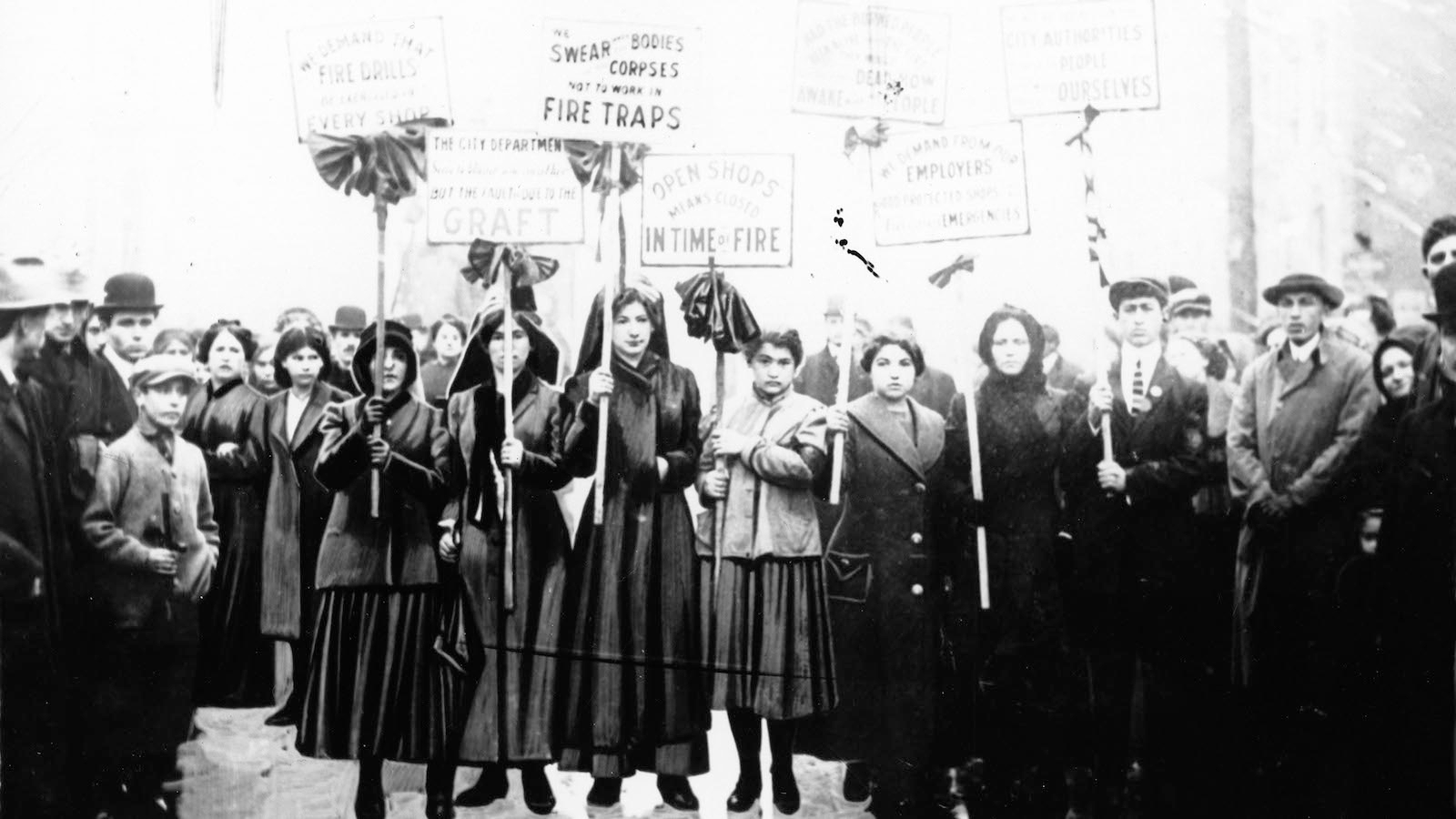A final catalyst transformed Jewish workers into an organized presence on the industrial scene. On Saturday afternoon, March 25, 1911, some eight hundred young women and several dozen young men were at work on the top floors of the ten-story Triangle Shirtwaist Company building. The firm’s owners had fudged on the strike agreement of the previous year, with its promise of Saturday half-days. Sanitary conditions also remained marginal, with piles of oil-soaked scraps lying under the sewing machines.
Apparently someone on the eighth floor carelessly tossed a cigarette into these waste materials. Immediately flames leaped through the workroom, first from machine to machine, then from floor to floor, transforming the overcrowded plant into an inferno. The heavy steel door leading to the outside toilets remained locked. In an ensuing panic, the owners fled the building without unlocking the door or other exits. Wherever the terrified girls fled, they met with a sweep of flame. Many suffocated and died, others fought their way to the elevator or a window for a chance at the building’s single fire-escape ladder. As The New York Times reported:
Screaming men and women and boys and girls crowded out on the many window ledges and threw themselves into the streets far below. They jumped with their clothing ablaze. The hair of some of the girls streamed up aflame as they leaped. Thud after thud sounded in the pavements…On both the Greene Street and Washington Place sides of the building grew mounds of the dead and dying. And the worst horror of all was that in this heap of the dead now and then there stirred a limb or sounded a moan…from opposite windows spectators saw again and again pitiable companionships formed in the instant of death–girls who placed their arms about each other as they leaped.
The blaze was not brought under control until darkness. By then the toll was 147 women and 21 men killed, and some two hundred others with critical burns and broken limbs. A few days later the Shirtwaist Makers Union arranged for a mass funeral. Over one hundred thousand workers marched in a silent cortege thorough the streets whose lamps and storefronts were draped in black. Lower East Side businesses were closed for the day. The victims, most of them burned or mangled beyond recognition, were buried in a common grave at the Workman’s Circle cemetery.
The article is reprinted from A History of the Jews in America written by Howard Sachar and published by Knopf.
With your help, My Jewish Learning can provide endless opportunities for learning, connection and discovery.



